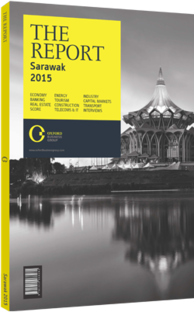OBG talks to Grunsin Ayom, Director-General, Malaysian Pepper Board

Interview: Grunsin Ayom
What are your projections for pepper prices in the short-to-medium term, given global pepper demand currently outpacing supply and rapidly rising prices?
GRUNSIN AYOM: With global demand continuing to outstrip supply, the industry expects prices to remain high for the foreseeable future. Prices for white and black pepper ended at RM38,000 ($10,571) per tonne and RM28,000 ($7790) per tonne, respectively, in 2013, and the average prices of black and white pepper for the 2014 were RM22,516 ($6234) and RM32,345 ($8998) per tonne, respectively. It was an unexpected development for prices to rise so rapidly and there is considerable optimism about how long these high prices can last. If such prices could last another year or longer, over 67,000 pepper farmers located mostly in rural areas would benefit tremendously in socio-economic terms and pepper prices would directly contribute to an increase in smallholders’ incomes.
The market is still very strong due to the global shortage of pepper, as consumption has exceeded production for the past nine years. In 2006 the production deficit was only 5650 tonnes, but it widened to a 47,050 tonnes in 2013 and was expected to increase further to 54,125 by the end of 2014. According to a report by the International Pepper Community (IPC), total global consumption of pepper will hit 387,625 tonnes, over production of 333,500 tonnes, resulting in a supply shortfall of 54,125 tonnes for 2014. According to the IPC, global pepper consumption grew an average of 4.8% per annum between 2001 and 2013, while supply only grew 0.3% on average per annum.
What new targets are being set for establishing farms in the short-term, and how can the target of 20,000 ha of farms by 2020 be achieved?
GRUNSIN: In line with the National Commodity Policy’s objective to raise the incomes of industrial commodities entrepreneurs, including smallholders, the government and the Malaysian Pepper Board (MPB) will modernise the efficiency and competitiveness of the pepper industry, in addition to improving the socio-economic well-being of pepper farmers.
Pepper cultivation currently covers about 15,130 ha. Efforts are under way for planting to reach at least 18,000 ha by 2020, with a total production of 42,000 tonnes. However, our focus is on raising productivity and product quality rather than purely increasing planting areas. Under the 10th Malaysia Plan, the government provides assistance to growers as part of the Pepper Industry Development Programme, which was implemented by MPB.
This planting scheme offers inputs and technical assistance for new planting, crop maintenance and quality improvement at the farm level and in 2014 the board spent RM16m ($4.5) for such purposes – about 55% of the total development budget allocation for pepper planting and farm maintenance.
The board is also providing assistance to poor households under the 1-AZAM Tani programme, a poverty eradication programme designed to aid the rural poor through the generation of income from pepper planting. An additional 38.6 ha are expected to be planted under this programme with RM4.6m ($1.3m).
In what ways have farmers and producers benefited from a more transparent pepper market? What strategies have been most effective?
GRUNSIN: The current market is very transparent and farmers are far better informed of trends and price movements, rendering them better positioned to sell their pepper stocks and get the best offer. With the advancement of information technology, farmers and other industry players can now easily access the latest information on market situations made available via the internet and media. Average pepper prices are disseminated during working days through radio, local newspapers and the MPB official website daily. Daily prices are also made available via SMS. Accessibility of ICT has truly resulted in a far more transparent pepper market and has increased data reliability and trade efficiency.
You have reached the limit of premium articles you can view for free.
Choose from the options below to purchase print or digital editions of our Reports. You can also purchase a website subscription giving you unlimited access to all of our Reports online for 12 months.
If you have already purchased this Report or have a website subscription, please login to continue.

